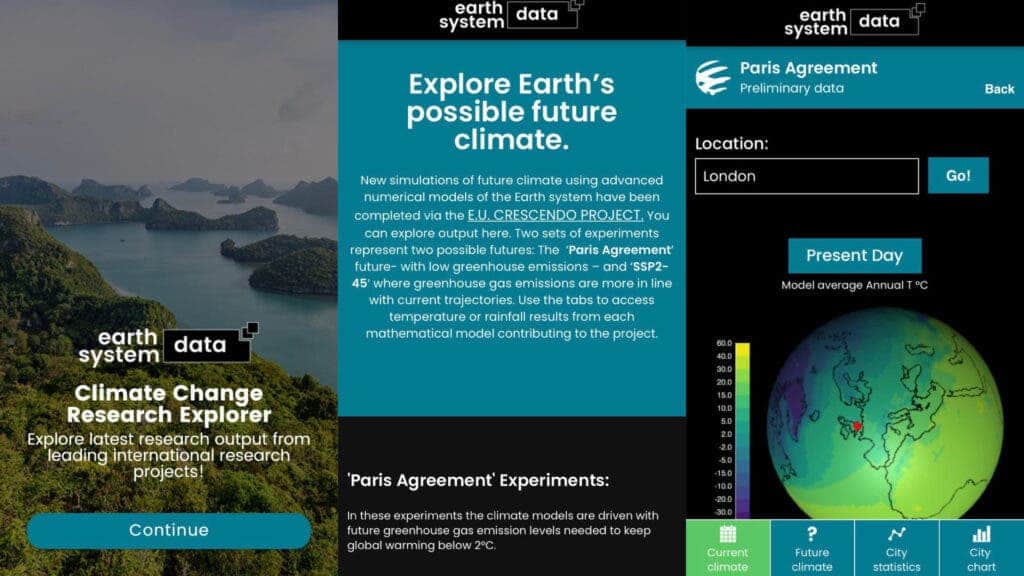As emissions continue to escalate, the future of the world will likely be very different because of climate change. Now, a new mobile app allows people to explore the changes to be experienced by towns and cities, using temperature and rainfall projections from six major global research centers.

The free to download ESD Research app was developed by EarthSystemData together with the Tyndall Centre for Climate Change at East Anglia University. It’s being launched the same week the United Nations COP26 climate conference was supposed to start in Scotland (which has been postponed until next year due to the coronavirus pandemic).
The simulations allow users to see what their city would look like in 2100 if global warming is limited to below 2ºC, which is the goal of the Paris Agreement from 2015. Then, as a second scenario, it shows the results of a “moderate” emissions reduction, with global temperatures reaching about 4ºC in 2100.
Using it is pretty straightforward. You go into the app, type in the location you want to look at and then the app shows simulations of the current climate and projections of the future with the two possible scenarios. ESD Research is already available to download for free in the Apple Store and in Google Play.
The researchers at Tyndall said that many cities are predicted to warm by approximately the same as the planet average by the end of the century — both in the low CO2 emissions and the moderate CO2 emissions projections. The warming in the Arctic could be more than double or more the planetary average increase in temperature.
“We want people to see for themselves what the best climate scientists and the best climate models show for the places in the world that they care about,” said Asher Minns, head of the Tyndall Centre. “The app ensures climate data is made accessible to global citizens without interpretation by politicians, media, and campaigners.”
The world average temperature has already risen by 1ºC compared to the start of the industrial revolution. With the current pledges, the world will face global warming between 3ºC and 4ºC. That’s why experts are calling for more ambitious climate action that would give us a shot at meeting the Paris Agreement’s goals.
Doing so requires a global, system-wide shift in how humanity produces and uses energy, travels, our eating habits, and how we produce goods and services. It’s a challenging transformation, but some countries are already taking the first steps, with goals to have net zero emissions by 2050 or 2060, such as China and the European Union.
“Opinion polls across the world show that people are worried about climate change but rarely discuss it. The ESD Research app now supports these necessary conversations about where they live, whether with family, friends, colleagues, or local government leaders,” said Minns in a statement.



